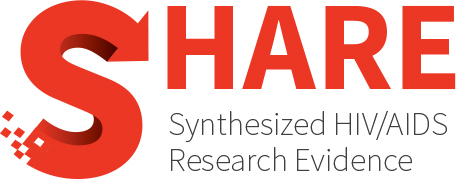Category Archives: Prevention, Engagement and Care Cascade
The HIV pre-exposure prophylaxis continuum of care among women who inject drugs: A systematic review
INTRODUCTION: People who inject drugs have a substantial risk for HIV infection, especially women who inject drugs (WWID). HIV pre-exposure prophylaxis (PrEP), a highly-effective HIV prevention drug, is uncommonly studied...
Factors influencing treatment adherence in hypertension and HIV management in South Africa: A comparative literature review
BACKGROUND: Hypertension (HTN) is the most significant risk factor for cardiovascular disease (CVD) in South Africa (SA), with one in three people over the age of 25 suffering from HTN....
Narrative review of studies on HIV pre-exposure prophylaxis in Brazil and its implementation in the public health network
OBJECTIVES: To discuss studies conducted in Brazil relating to PrEP, from 2012 to 2022, based on a narrative review. METHODOLOGY: The databases of the Virtual Health Library/PAHO, portals from Scielo,...
Systematic review of interventions aimed at improving HIV adherence to care in low- and middle-income countries in Sub-Saharan Africa
Long-term adherence to antiretroviral medication continues to present as a challenge along the continuum of the HIV care cascade. HIV interventions and support programs are significantly threatened in resource-limited settings...
Safety and efficacy of abacavir for treating infants, children, and adolescents living with HIV: A systematic review and meta-analysis
Background: Abacavir is a nucleoside reverse transcriptase inhibitor recommended in paediatric HIV care. We assessed the safety and efficacy profile of abacavir used in first, second, or subsequent lines of treatment...
Adherence to option B+ and its association with disclosure status and counseling among HIV-positive pregnant and lactating women in Ethiopia: Systematic review and meta-analysis
Objectives: This systematic review and meta-analysis aimed to assess the pooled estimate of option B+ level of adherence and its association with disclosure status and counseling among pregnant and lactation women...
Increased risk of sexually transmitted infections in men who have sex with men taking preexposure prophylaxis: A meta-analysis
BACKGROUND: Men who have sex with men (MSM) are a priority population for preexposure prophylaxis (PrEP) for HIV prevention. We summarized the surveillance data from the studies of MSM taking...
Prevalence and global trends of polypharmacy among people living with HIV: A systematic review and meta-analysis
Background: There has been a rising prevalence of polypharmacy among people living with HIV (PLWH). Uncertainty however remains regarding the exact estimates of polypharmacy among these cohorts of patients. Methods: We conducted...
Ingestible electronic sensors for monitoring real-time adherence to HIV pre-exposure prophylaxis and antiretroviral therapy
PURPOSE OF REVIEW: This review summarizes the recent advancements and future directions of digital pill systems (DPS) – which utilize ingestible sensors to directly measure medication ingestion events in real-time...
HIV voluntary counseling and testing (VCT-HIV) effectiveness for sexual risk-reduction among key populations: A systematic review and meta-analysis
Background: HIV disproportionately affects people who inject drugs, transgender people, sex workers, men who have sex with men, and incarcerated people. Recognized as key populations (KP), these groups face increased impact...
Condom use and risk factors of inconsistent or low use of the condoms during heterosexual anal intercourse in sub-Saharan Africa: A scoping review
BACKGROUND: Anal intercourse (AI) has been reported to be the riskiest among other sexual intercourses in spreading human immunodeficiency virus (HIV) and the risk could be minimized by the use...
Men who have sex with men is the high-risk drug resistance population: A meta-analysis of HIV-1 drug resistance profiles and trends in China
WHAT IS KNOWN AND OBJECTIVE: Except for the transmitted drug resistance (TDR)’s standard sampling and monitoring protocol, China’s HIV-1 pretreatment drug resistance (PDR) and acquired drug resistance (ADR) results vary...
